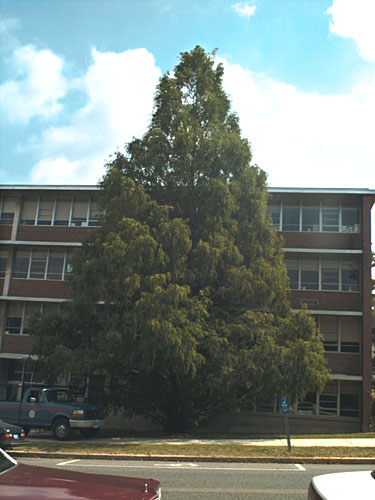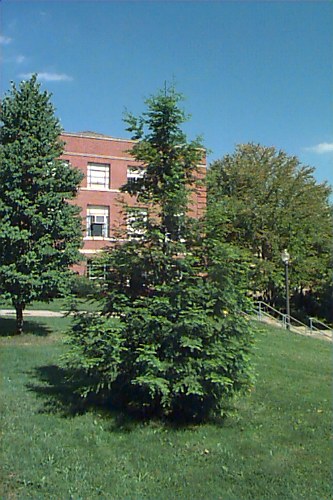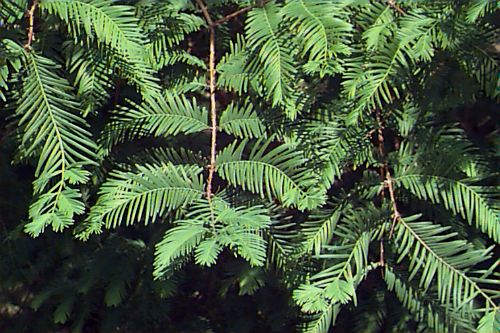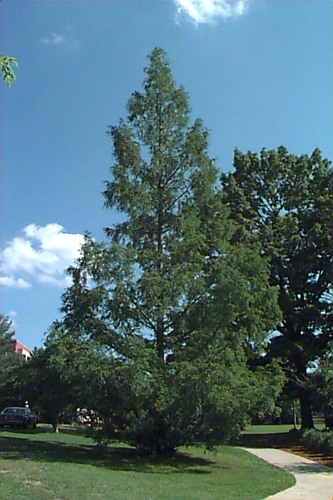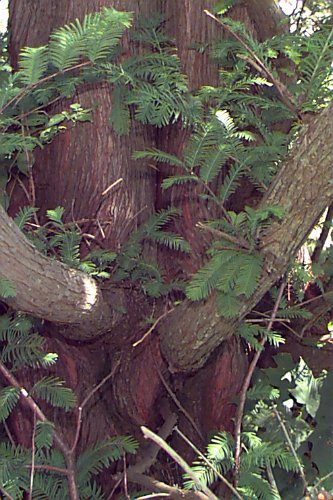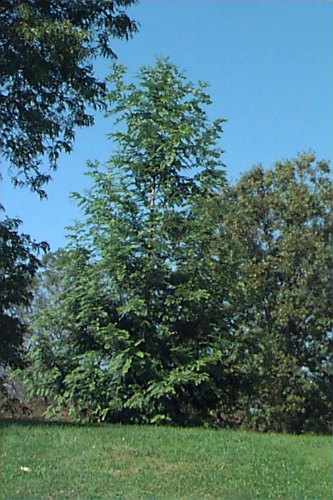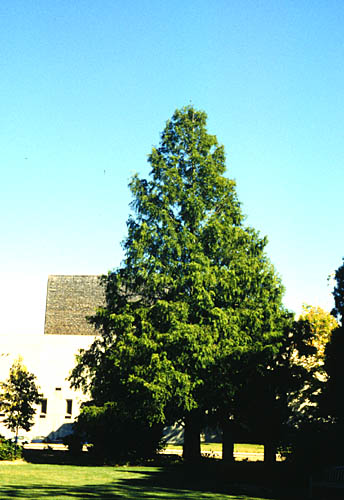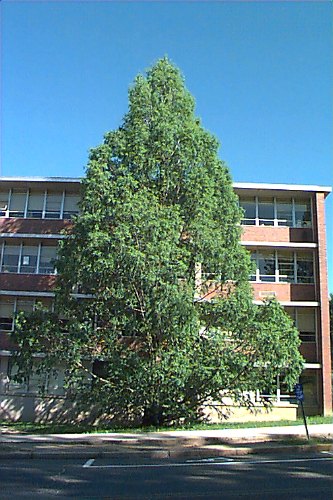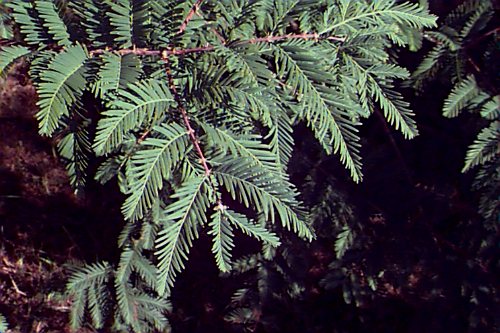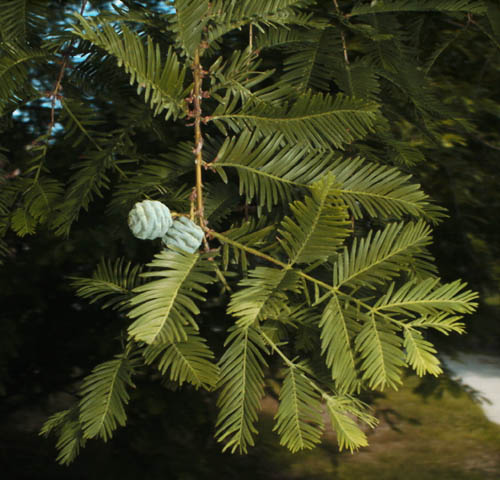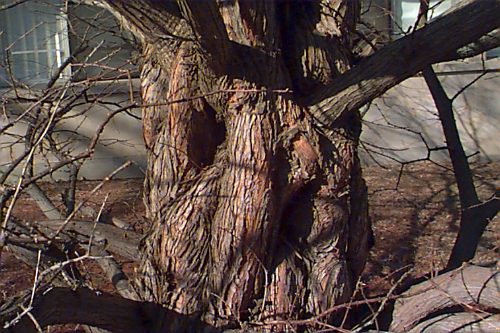Metasequoia glyptostroboides
Dawn Redwood
Taxodiaceae
ExpandHabitat
- native to China
- first described from fossil records in 1941
- live plants were then discovered in the same year
- seeds were collected in the mid 1940's by the Arnold Arboretum and brought back to the United States
- zone 4
Habit and Form
- a deciduous, coniferous , large tree
- uniform conical habit
- horizontal branching
- typically reaches 75' to 100' tall
- growth rate is fast
- texture is fine and airy in leaf
Summer Foliage
- leaves are deciduous
- opposite arrangement on branchlets
- 0.5" long, linear, flat leaves
- stems are either persistent or deciduous
- deciduous stems are green and are held on brown, persistent stems
- deciduous stems, have needles, but do not have buds
- persistent stems hold deciduous stems, some needles and oppositely-arranged buds
- deciduous stems drop in the fall with the needles
- foliage is medium to bright green
Autumn Foliage
- turns a unique pinkish tan to reddish bronze before dropping in the fall
Flowers
- monoecious with male and female flowers
- male flowers in clusters
- female flowers solitary
- not ornamentally important
Fruit
- elongated or rounded cones
- 0.5" to 1" long
- bloomy blue when young
- brown or dark brown when mature
Bark
- shredded reddish brown bark
- attractive
- develops an interesting buttressed trunk
- trunk base is tapered and exhibits a braided, fluted structure
Culture
- very rapid grower
- best on moist, well-drained, slightly acidic soils
- full sun is needed
- easily transplanted
- avoid locating the plant in frost pockets since late growth is injured by early fall frosts
Landscape Use
- as a specimen
- as a lawn tree to provide shade
- for golf courses
- campuses
- needs space to develop
- uniform conical habit can be useful where regularity is needed in landscape designs
- for screening
Liabilities
- susceptible to early fall frosts because it tends to grow late into the season
- does poorly on dry or high pH soils
- spider mites on dry soils
- Japanese beetles will eat the foliage
- large size must be accommodated
- somewhat rare and hard to locate
ID Features
- conical, uniform habit
- deciduous needles and stems
- opposite buds on persistent stems separate it from Taxodium distichum (Common Baldcypress)
- buttresses trunk with braided character and shredded red-brown bark
Propagation
- by seed following stratification
- by cuttings; softwood or hardwood
Cultivars/Varieties
'National' and 'Sheridan Spire' - These forms are more narrowly upright than the species, reaching perhaps 60' tall and a third as wide. They are not widely available.
'Gold Rush' and 'Ogon' - These two gold-foliaged forms may, in fact, be the same. The plants produce yellow needles that are especially bright when young. Growth is slower than the species, and the mature size will be smaller. Mail-order specialty catalogs have begun featuring these cultivars -- often for a hefty price.
